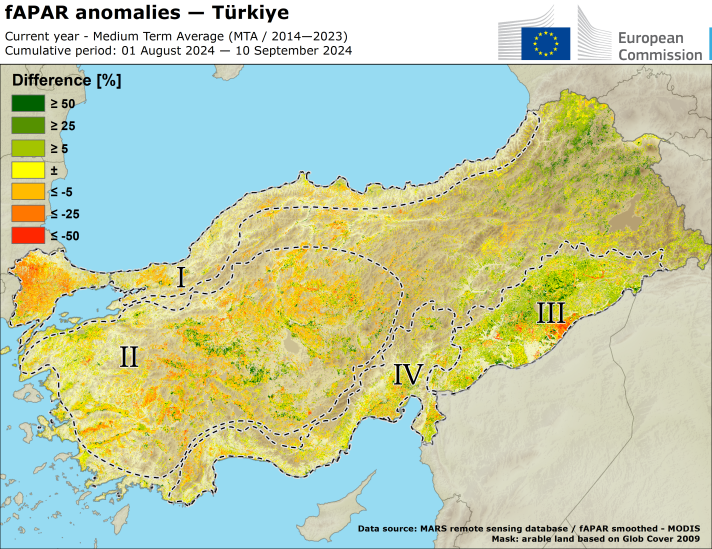
Highlights
- In Anatolia, very favourable conditions during spring were partially compromised by a very hot June, resulting in winter crop yields just slightly above the average. Summer crops developed well despite an intense heatwave around 20 August. They are currently in average condition and harvesting is expected in mid to late October.
- In south-eastern regions, winter crops had an optimal season that was concluded around 15June. Summer crops benefitted from favourable conditions throughout the summer, and are now approaching flowering, with harvest expected in November.
- In Mediterranean regions, summer crops proceeded under favourable conditions - high temperatures and sufficient water for irrigation. Harvesting is expected to start in October.
- In the central Black Sea region, the winter crop season was negatively affected by heat stress which reduced flower fertility and grain filling.
The map displays the differences between the fraction of absorbed photosynthetically active radiation from 1 August to 10 September 2024 and the medium-term average (2014–2023) for the same period. Positive anomalies (shown in green) reflect above-average biomass accumulation, while negative anomalies (shown in red) reflect below-average biomass accumulation.
Further information
Subscribe to the JRC MARS Bulletin | (Unsubscribe from your profile page)
JRC MARS (Monitoring Agricultural Resources) Bulletins
The latest information about global agricultural production hotspots for countries at risk of food insecurity is available on the JRC’s ASAP (Anomaly hot Spots of Agricultural Production).
Details
- Publication date
- 30 September 2024
- Author
- Joint Research Centre
- JRC portfolios




